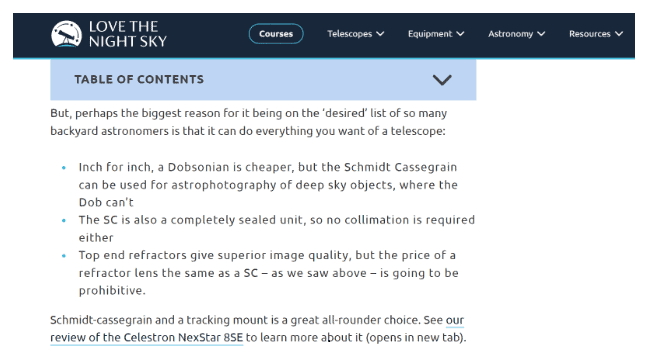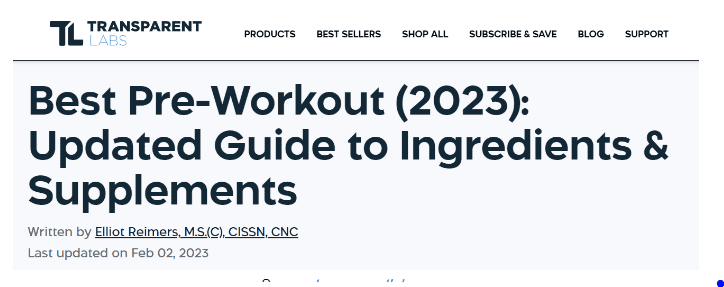When your sales numbers hit a plateau, despite having an innovative product line, it might be time for a change. Content marketing and lead nurturing go together and the solution might be sitting right under your nose. We’re talking about your website’s blog.
Table of Contents
You can revamp your content marketing strategy, focusing on creating valuable, relatable blog posts that resonate with your readers’ needs and pain points. The impact can be immediate: more engagement, a surge in leads, and a noticeable boost in sales.
In this article, we’ll explore the relationship between content marketing and lead nurturing. Let's see how a strategically curated blog can be a game-changer in nurturing leads and driving sales. Here’s how you can leverage content marketing to turn prospects into loyal customers.
Prioritize the Pain Point Over Making a Sale
When it comes to content marketing, subtlety is key. It’s tempting to turn every blog post into a sales pitch, but this approach can backfire, especially when potential customers are seeking answers, not a sales push.
The focus should be on addressing the reader’s pain points, providing value, and establishing trust. This strategy not only fosters a positive brand image but also nurtures long-term customer relationships.
Let’s take a closer look by discussing two real-world examples of brands that use this approach in the right way.
The first example is Lanteria, an HR management system. They utilize this strategy brilliantly in their B2B approach. For instance, take their “5-Step Guide to Creating Work Schedules” post.
Instead of overtly promoting their product, Lanteria focuses on delivering genuinely helpful content. Their product mentions are subtle and seamlessly integrated into the valuable advice they provide.
This approach not only positions Lanteria as an industry expert but also builds trust with potential customers who are looking for practical solutions, not a sales pitch.

Source: lanteria.com
On the B2C front, LovetheNightSky demonstrates a similar tact in their “How Do Telescopes Work?” post. The content is educational, answering a common question among astronomy enthusiasts with depth and clarity.
Remarkably, the post includes only one link to a conversion post, maintaining the article’s objective nature. This restraint is crucial. Had they littered the post with product links, it would have detracted from the educational value and could have turned off readers seeking unbiased information.

Source: love the night sky
Key Takeaway
Both Lanteria and LovetheNightSky show that focusing on the reader’s needs first can be a more effective strategy than direct selling. By providing value and demonstrating expertise, they attract and nurture leads in a way that feels organic and genuine.
This approach helps build a loyal customer base and establishes the brand as a trusted authority in their respective fields.
Develop Trust in Your Brand
Trust is the cornerstone of any successful business, particularly in sectors where credibility is paramount, like health and finance. In these industries, customers aren’t interested in buying a product or service but want to invest in their well-being or financial security. That’s why building trust through your content is essential.
An example of this approach comes from Transparent Labs, which sells natural sports nutrition supplements. To understand how they accomplished establishing trust with their audience, we’ll take a look at their guide on pre-workout ingredients and supplements.
Here’s how they set a benchmark in this regard:
- Expertise and qualifications
The writer of the guide isn’t just a random content creator – they come with impressive qualifications. This immediately adds credibility to the content, assuring readers that the information is coming from a knowledgeable source.

source: transparentlabs.com
- Scientific backing
Transparent Labs avoids pseudoscience and backs all of their claims with scientific evidence. The guide is peppered with numerous scientific citations, providing readers with evidence-based information. This approach is crucial in an industry rife with unfounded claims and idle chatter.

source: transparentlabs.com
- Transparent reviews
Below their posts, product reviews with star ratings offer an additional layer of trust. These reviews give potential customers an unfiltered view of other users’ experiences, adding to the brand’s credibility.

Source: transparentlabs.com
Key Takeaway
Transparent Labs’ strategy shows that developing trust isn’t just about what you sell but how you sell it. By focusing on expertise, scientific accuracy, and transparency, they inform their audience and build a relationship based on trust. Implementing this approach in your content marketing strategy is especially crucial if you’re operating in sectors where the stakes are high.
Show Leads What Life Is Like Without Your Product
One of the most effective tactics in content marketing is to illustrate the challenges your potential customers might face without your product or service. This strategy goes beyond simply listing features and benefits – it paints a relatable picture of the frustrations and hurdles in the absence of what you offer.
By doing so, you highlight the value of your product and, at the same time, instigate a sense of urgency and need.
A prime example of this approach is seen with Going, a premium platform offering cheap flights and airfare deals. In their post on “How to Use Google Flights”, they masterfully detail the often tedious and complex process of finding affordable flights. The post walks readers through the numerous steps, decisions, and complications involved in using Google Flights for this purpose.
By describing the lengthy and intricate process, Going taps into a common pain point: the overwhelming task of sifting through countless flight options to find the best deal. Most readers can relate to the frustration of navigating these complex flight search tools.
The brilliance of their strategy lies in the conclusion. After taking the reader through this strenuous journey, they introduce their product as a simpler, more efficient alternative. They effectively say, “You can go through all these hassles, or you can use Going to eliminate most of them.” This not only showcases the utility of their service but also positions it as a much-needed solution.
Source: going.com
Key Takeaway
This approach by Going demonstrates how emphasizing the difficulties faced without a product can be a powerful motivator for potential customers. So, don’t just show what your product does – make the absence of it feel irrational.
This strategy can turn a passive reader into an engaged potential customer, driven by the desire to avoid the painted scenarios.
Content Marketing and Lead Nurturing Through Cluster Content
Keeping your audience engaged is as important as attracting them in the first place. One effective way to retain your leads’ interest is through cluster content. This approach involves creating interconnected blog posts that provide additional, relevant information to your readers.
By doing so, you encourage them to explore more of your site. The longer leads stay and the more content they consume, the higher the likelihood they’ll remember your brand and eventually click through to your product pages.
ShopSolar, a company specializing in solar power systems, exemplifies the right way to use cluster content. Take their post on converting watts to kilowatts as a case in point. This blog post isn’t just a standalone piece of information but a part of a larger content ecosystem.
Within the article, ShopSolar strategically includes contextual links to related posts. And not some random links but carefully chosen pieces to ensure relevancy and value to the reader. For instance, if the post discusses watt conversion, links to articles about other relevant units of measurement might be included.
Moreover, at the end of the post, ShopSolar displays a list of related blog posts. The list isn’t comprised of generic links but a curated selection of topics that are likely to interest someone reading about converting watts to kilowatts. This might include posts on other unit conversions, understanding your home’s energy needs, or tips for maximizing solar efficiency.

Source: shopsolarkits.com
Key Takeaway
This tactic is effective for a few reasons. Firstly, it provides value to the reader by offering them additional, relevant information seamlessly. Secondly, it keeps them engaged on your site for longer. And finally, it subtly guides them deeper into your brand’s ecosystem, increasing the likelihood of them remembering your brand and considering your products.
Give Your Customers a Voice
One of the most authentic ways to connect with your audience is by letting your customers do the talking. Customer stories, especially when presented as detailed case studies, resonate deeply with potential clients. They see real-life applications and results, not just theoretical benefits.
According to a report by the Content Marketing Institute, 73% of B2B buyers use case studies to make purchasing decisions. This statistic underlines the power of customer narratives in influencing buying behavior.
Hotjar, a product experience insights platform, adeptly utilizes this strategy. A standout example is their case study on how ClassHero reversed a 48% drop in conversions. This post is more than a testimonial. It’s a comprehensive exploration of a customer’s journey with the Hotjar platform.
The case study delves deep into ClassHero’s challenges, how they used Hotjar to address their issues, and the tangible results they achieved. By providing a detailed narrative, the case study offers a genuine, relatable story that potential customers can learn from and connect with. That way, it promotes Hotjar in a positive light.
What makes this case study particularly effective is its use of the customer’s own words. This approach ensures that the content speaks directly to the audience in a language they understand and relate to. Because, at the end of the day, it’s less about what your features are and more about how those features impact real businesses in real scenarios.

Source: hotjar.com
Key Takeaway
By showcasing detailed customer experiences, Hotjar highlights the effectiveness of their platform and builds trust and credibility at the same time. They provide potential customers with a relatable narrative that demonstrates the real-world impact of their solution, making the case study a powerful tool in their content marketing arsenal.
Craft Content That Is Ready to Sell
When your audience is on the brink of making a purchase, the content they encounter can be the final nudge they need. At this stage, your blog posts must be detailed, objective, and packed with value. They should answer every possible question and alleviate any lingering doubts.
Moreover, including strategically placed calls-to-action (CTAs) is crucial. These CTAs serve as gentle prompts, guiding readers toward making a purchase, thereby creating a seamless and frictionless customer journey.
Lick, a company selling wall paint and wallpaper, excels in this area. A prime example is their “How to make your home feel like a Wes Anderson movie” post. This article goes beyond mere advice on aesthetics, and it’s a masterclass in subtle yet effective selling.
Each section of the post is a tip on achieving the Wes Anderson look with an added showcase for Lick’s products. They provide a short but comprehensive overview of each product, focusing on its most crucial features and benefits. While the information here is of an educational nature, it’s also designed to address the specific needs and desires of their target audience.
What sets Lick apart is their use of CTAs. These aren’t jarring or salesy. Instead, they’re woven into the content organically. After enlightening the reader on how a particular wall paint or wallpaper can help achieve that coveted Wes Anderson aesthetic, a CTA is placed, inviting the reader to explore the product further or make a purchase.
This approach ensures that the transition from reader to customer is natural and effortless.

Source: lick.com
Key Takeaway
Lick’s strategy demonstrates that selling through content doesn’t have to be overt or pushy. By combining valuable information with well-placed conversion fields, they create content that not only engages readers but also smoothly guides them toward making a purchase. It’s a perfect blend of providing value and facilitating a buying decision.
Content Marketing and Lead Nurturing – FAQs
How can I make my content stand out among competitors?
Focus on creating unique, value-driven content that showcases your expertise and industry insights. Personalize your content to address specific industry pain points and trends. Utilize formats like webinars, in-depth guides, and thought leadership articles to establish authority and stand out.
Can small businesses benefit from these content marketing and lead nurturing strategies?
Absolutely. Small businesses can significantly benefit from these strategies. Tailored content marketing can level the playing field, allowing smaller brands to showcase their expertise and connect with their audience on a personal level.
How often should I update my blog for effective lead nurturing?
Consistency is key. Aim for regular updates – whether that’s weekly, bi-weekly, or monthly – to keep your audience engaged and your brand top of mind. The frequency can vary based on your resources and audience needs.
How can I align my content marketing with my B2B sales funnel?
Understanding your sales funnel is crucial. Align your content to each stage – awareness, consideration, and decision. Create content that addresses specific needs at each stage, from educational articles in the awareness phase to detailed case studies and product comparisons in the decision phase.
Is it necessary to include customer stories in my content?
While not mandatory, including customer stories can be highly effective. They add authenticity to your content and help potential customers relate to your product or service through real-life examples.
How do I measure the success of my content marketing strategy?
Success can be measured through various metrics such as website traffic, engagement rates, lead generation, and conversion rates. Tools like Google Analytics and social media insights can be invaluable in tracking these metrics.


